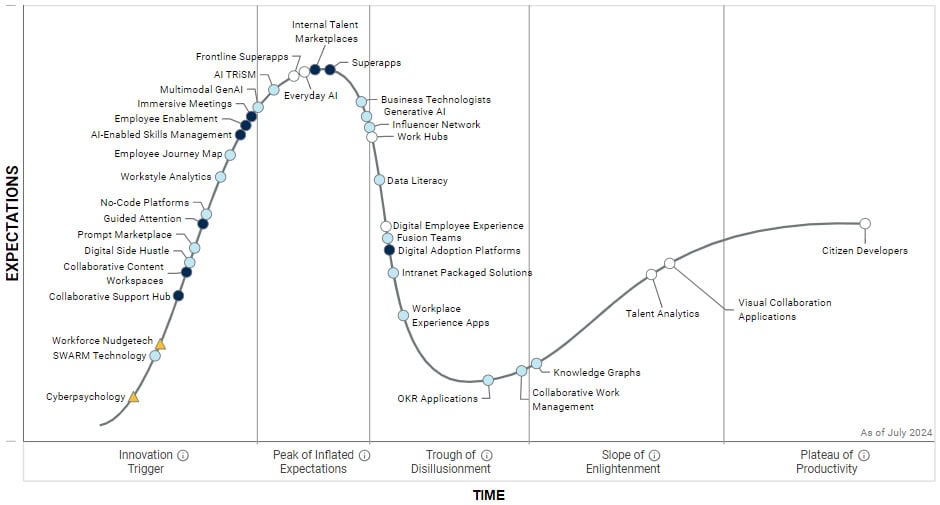The Gartner Hype Cycle for Digital Workplace Applications, 2024 highlights the crucial relationship between everyday AI and digital employee experience (DEX) as the nearest-term transformative innovations for the workplace.
Everyday AI, positioned at the Peak of Inflated Expectations, promises to remove digital friction by assisting employees with tasks like writing, research, collaboration, and ideation. This technology is a core component of DEX, which aims to enhance workforce digital dexterity and drive organisational prosperity through 2030.
Figure 1: Hype Cycle for Digital Workplace Applications, 2024

As the focus on hybrid and remote work dwindles, digital workplace application leaders are now concentrating on the strategic importance of everyday AI. This technology supports a new way of working, where intelligent software acts as a collaborative partner rather than a mere tool.

“Everyday AI promises to remove digital friction, by helping employees write, research, collaborate and ideate,” said Matt Cain, distinguished VP analyst at Gartner. “It is a core part of DEX, which is a concentrated effort to remove digital friction and improve workforce digital dexterity, which itself is one of the key factors that will drive organisational prosperity through 2030.”
Everyday AI is expected to become more sophisticated, moving from services that can sort and summarize messages to those that can produce work artefacts with minimal guidance, revolutionising workforce productivity.

“Everyday AI technology aims to help employees deliver work with speed, comprehensiveness and confidence,” said Adam Preset, VP analyst at Gartner. “It supports a new way of working, where intelligent software is acting as more of a collaborator than a tool. The digital workplace is now entering the era of everyday AI.”
Concurrently, the emphasis on organisations having a DEX strategy is increasing. With nearly all employees becoming digital employees, businesses must measure and improve DEX to attract and retain talent, enhance employee engagement, and maximize discretionary effort.
However, DEX is currently in the Trough of Disillusionment, as experiments and implementations have failed to deliver. To increase the appeal and relevance of DEX, business leaders are advised to take a holistic approach across IT and non-IT partners to build an environment that empowers employees to adopt new ways of working.
The mutually reinforcing relationship between everyday AI and DEX highlights their significance as the nearest-term transformative innovations poised to shape the future of work.



